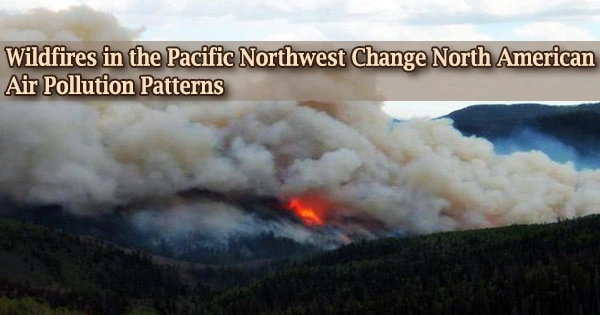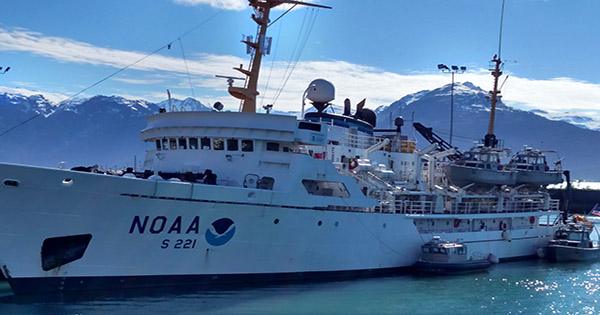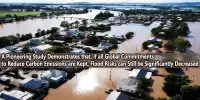According to recent research, wildfires in the Pacific Northwest are getting bigger and more intense, which is changing the seasonal rhythm of air pollution and leading to an increase in harmful pollutants in August. According to the study, the smoke is undermining improvements in clean air and posing possible health concerns to millions of people.
Researchers from the National Center for Atmospheric Research (NCAR) discovered that carbon monoxide levels, a chemical that signals the presence of other air pollutants, had drastically increased as wildfires have grown in August.
Because of atmospheric chemical reactions linked to variations in the sunshine, carbon monoxide levels are typically lower in the summer. The discovery that these levels have increased shows the severity of the smoke’s effects.
“Wildfire emissions have increased so substantially that they’re changing the annual pattern of air quality across North America,” said NCAR scientist Rebecca Buchholz, the lead author. “It’s quite clear that there is a new peak of air pollution in August that didn’t used to exist.”
Outside, carbon monoxide normally poses a little health risk, but the gas is a warning of the presence of other, more dangerous pollutants, such as ground-level ozone and aerosols (airborne particulates), which are more likely to occur on hot summer days.
For the majority of the previous two decades, the research team tracked wildfire emissions using satellite-based observations of atmospheric chemistry and global fire inventories. They also utilized computer modeling to examine the potential effects of the smoke. They concentrated on the Northeast, the Central United States, and three regions of North America: the Pacific Northwest.
The results, according to Buchholz, were especially startling because carbon monoxide levels have generally been declining due to advancements in pollution-control systems, both internationally and in North America.
The study was published this week in Nature Communications. The research was funded in part by the U.S. National Science Foundation, NCAR’s sponsor. The paper was co-authored by researchers from the University of Colorado, Boulder; Columbia University; NASA; Tsinghua University; and Colorado State University.
Increasing impacts on air pollution
Climate change, rising development, and land use policies have all contributed to a rise in wildfires in the Pacific Northwest and other parts of North America. As emissions from human activities decline due to more effective combustion processes in automobiles and industrial buildings, fires are becoming a more significant contributor to air pollution.
Multiple lines of evidence point to the worsening wildfires in the Pacific Northwest as the cause of degraded air quality. It’s particularly unfortunate that these fires are undermining the gains that society has made in reducing pollution overall.
Rebecca Buchholz
Buchholz and her colleagues used data from two instruments on the NASA Terra satellite to analyze the effects of fires: MODIS (Moderate Resolution Imaging Spectrometer), which detects fires and provides information on aerosols; and MOPITT (Measurements of Pollution in the Troposphere), which has tracked carbon monoxide continuously since 2002. They also looked at four wildfire emissions inventories that use MODIS data.
The time span that the researchers concentrated on was from 2002, the start of a reliable and extensive record of MOPPIT data, to 2018, the final year for which complete observations were available at the time they started their analysis.
The findings indicated a rise in carbon monoxide levels across North America in August, which coincided with the Pacific Northwest’s busiest burning season. According to the emissions inventories, the shift was particularly noticeable between 2012 and 2018, when the Pacific Northwest fire season grew significantly more active.
According to MODIS data, aerosols also exhibited an increasing trend in August. The scientists ruled out other potential emission sources in order to determine whether the higher pollution levels were brought on by the fires.
They discovered that in August, carbon monoxide levels were significantly lower upwind of the Pacific Northwest and over the Pacific Ocean, indicating that pollution was not coming in from Asia.
Additionally, they discovered that the central United States and the Northeast’s fire seasons did not correspond with the spike in pollution in August, ruling out the possibility that local fires in those areas were to blame.
Additionally, they looked at two fossil fuel emission inventories, which revealed that from 2012 to 2018, none of the three study zones had an increase in carbon monoxide emissions caused by human activity.
“Multiple lines of evidence point to the worsening wildfires in the Pacific Northwest as the cause of degraded air quality,” Buchholz said. “It’s particularly unfortunate that these fires are undermining the gains that society has made in reducing pollution overall.”
Risks to human health
Since wildfire smoke has been associated with serious respiratory issues and may possibly have negative effects on the cardiovascular system and pregnancy outcomes, the findings have health concerns for people.
The Community Atmosphere Model with a Chemistry Component, developed by NCAR, was used by Buchholz and her co-authors to simulate the movement of emissions from the Pacific Northwest fires and their effects on carbon monoxide, ozone, and fine particulate matter.
The NCAR-Wyoming Supercomputing Center’s Cheyenne supercomputer was used to run the simulations. The findings indicated that more than 130 million people, including around 34 million in the Pacific Northwest, 23 million in the Central United States, and 72 million in the Northeast, could be harmed by the pollutants.
The study’s authors looked at respiratory fatality rates in Colorado during the month of August from 2002 to 2011, compared with the same month in 2012 to 2018, although they did not go into great detail about the emissions’ effects on health. Because the state’s respiratory death rates could easily be found, they decided on Colorado, which is in the study’s central U.S. region.
They discovered that between 2012 and 2018 when fires in the Pacific Northwest but not in Colorado caused greater emissions in August, the number of respiratory mortality in Colorado increased dramatically.
“It’s clear that more research is needed into the health implications of all this smoke,” Buchholz said. “We may already be seeing the consequences of these fires on the health of residents who live hundreds or even thousands of miles downwind.”
















